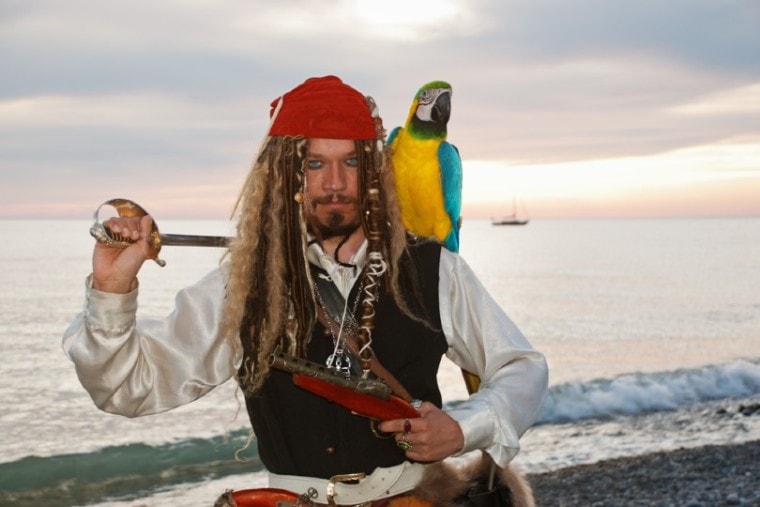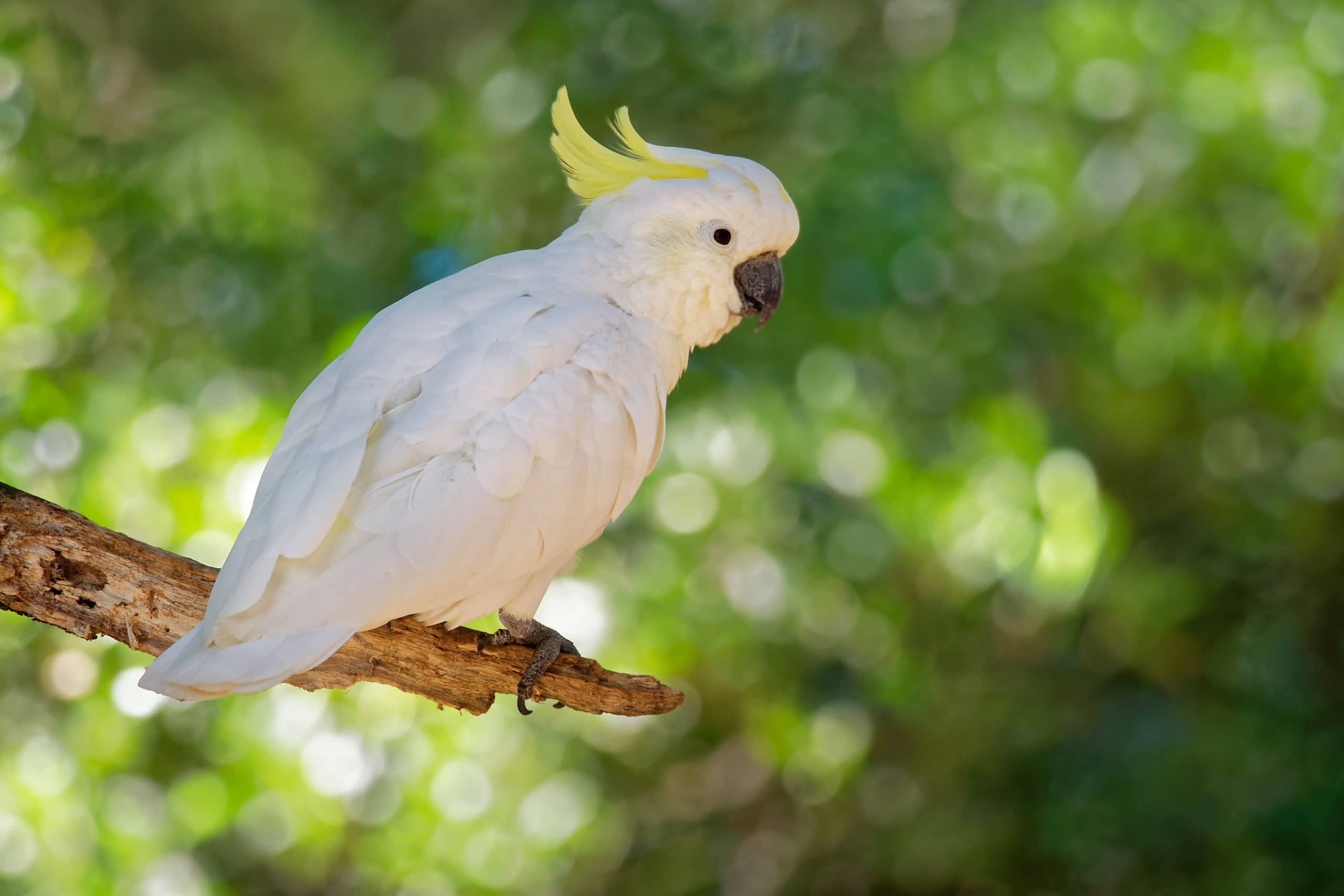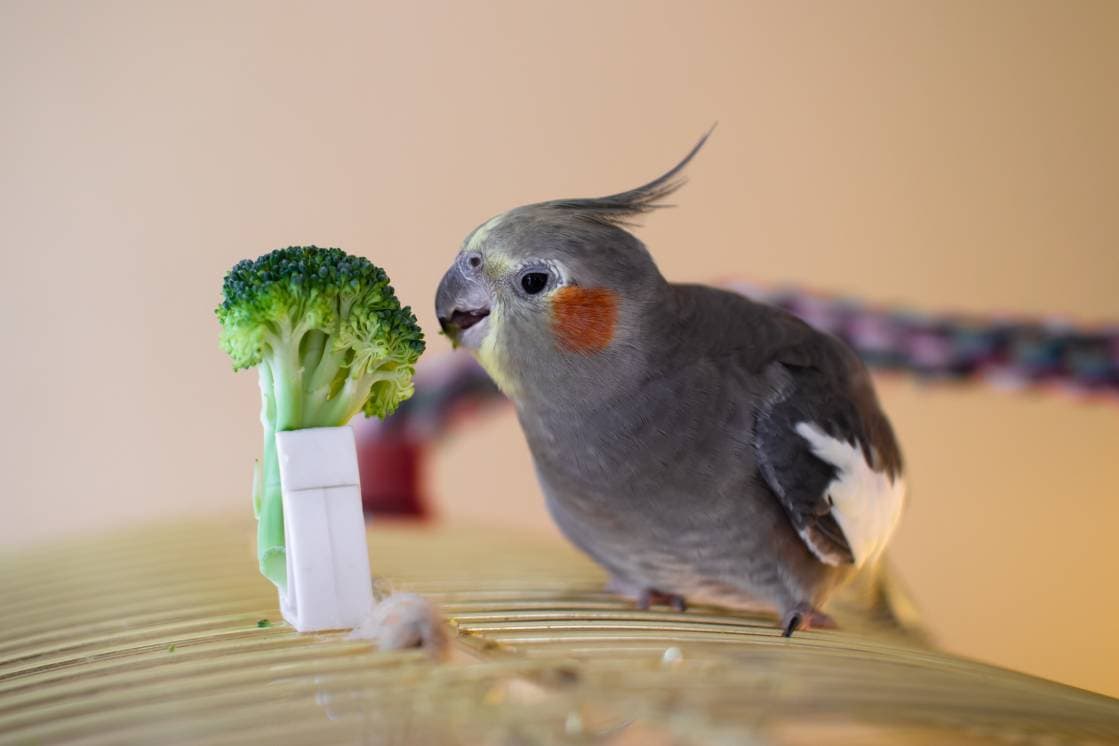
Besides a wooden leg, elaborate hat, and a hook for a hand, a pirate in popular culture often has a pet parrot perched on top of their shoulder. But how accurate is this representation? Did pirates keep parrots as pets, and what use did they have for them if so?
The blending of fiction and fact has led many people to associate pirates closely with parrots, but whether pirates kept parrots as pets is down to pure speculation. There is evidence that pirates kept cats on board their ships to take care of rats and possibly had dogs as companions occasionally, but there is little evidence for them keeping parrots.
In this article, we try to separate fact from fiction and find out whether swash-buckling pirates really favored having parrots as pets. Let’s dive in!
Where did the story of pirates and parrots originate?
Long John Silver, the fictional character who was the star pirate in Robert Louis Stevenson’s famous book, “Treasure Island,” is the first known fictional pirate character to have a parrot perched on his shoulder. This is most likely where the cultural association of pirates with parrots began. This fictional story was the origin of the stereotype but was probably based in truth — to a certain degree.
The so-called “golden age of piracy” began in the mid-1600s and lasted until the late 1700s, beginning with the boom of worldwide exploration and the trade of exotic goods from far-flung continents. The trade consisted of spices, gold, and slaves, as well as exotic animals, of which parrots were a popular commodity. The ships carrying these valuables were largely unprotected in the vast expanses of ocean, opening up the door for rampant theft. After all, many sailors realized that they didn’t have to make the treacherous journey across unexplored seas that could take months or even years, when they could simply steal them from poorly protected ships. And so began the golden age of pirates.

The trade in exotic animals
Since these voyages would mean weeks, months, or years out at sea, animals chosen for trade needed careful consideration. These animals needed to be fed and housed, and the voyage was difficult and uncomfortable for them, to say the least, ruling most large animals out of the equation. Cats were useful and fairly self-sufficient as long as there was an adequate supply of rats. Dogs were unlikely to be kept as pets on ships but were likely brought aboard for trade. Monkeys were another common commodity that could be sold once the pirates reached land.
Of all the animals that pirates were to encounter in exotic lands, parrots made the most sense to keep. Parrots do not eat much compared to cats or monkeys, their food was easy to store and keep on board, and they took up little space. Parrots are also colorful, intelligent, and entertaining, and they would make great pets during arduous voyages across the sea. They could also fetch high prices with minimum cost in trade once the pirates got back to shore.

Did pirates really keep parrots as pets?
While parrots were almost certainly common animals in the trade of exotic pets and pirates would certainly have come across many of them in their exploits, they may not have kept them as pets as often as we’d like to believe. There was a massive demand for parrots in Europe during the 18th and 19th centuries, and pirates could certainly have made a fair amount of money off parrots as opposed to keeping them as pets.
Although people would pay good money for them back at home, they would be tricky to sell legally, as these bright, noisy, and beautiful birds were far too attention-grabbing to evade being seen with well-known and often hunted criminals like pirates. This may have led pirates to avoid attempting to sell them at all, rather sticking to easily traded items, like gold or jewelry. A few parrots may therefore have ended up as pets on pirate ships.
This is all speculation, though, and while it is likely that some pirates kept parrots as pets, it was probably not that common. The story of Long John Silver has certainly fueled the public’s imagination and melded fiction into fact, but there is no real evidence to believe that pirates often kept parrots as pets.
Featured Image Credit: Mamuka Gotsiridze, Shutterstock








